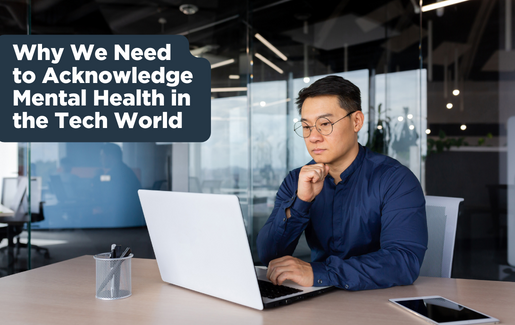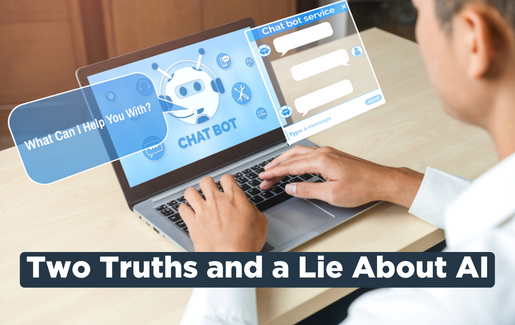
As human beings, we are beautifully complex but have an array of intertwining health and well-being needs. Certain factors, including job-specific stressors, can increase the risk of burnout, depression and anxiety among IT professionals.
This is not brand-new information, as others including DarkReading and Cisco have previously covered this important topic. In 2019, British Interactive Media Association (BIMA) reported that among their 3,333 IT respondents, 81% reported past year anxiety and depression while 66% were stressed by their work. A more recent report on the information security sector found that 12% of cybersecurity professionals were at risk of burnout as they report working between 51-70 hours a week, 46% were kept up at night due to stress of the job and 22% were kept awake because of worrying of a potential cyberattack on their organization (Chartered Institute of Information Security [CIISec], 2022).
For many, our career is an essential part of our identity. Having a career we are passionate about contributes toward a fulfilling life. Working in the IT industry, for instance, provides amazing challenges and technical puzzles to solve, giving our brains the sometimes under- or unappreciated stress that contributes to our growth.
The workplace is a powerful setting capable of contributing positively (as well as negatively) to our mental and physical health. Incorporating mental health support as part of the organization’s culture is essential for the health of the human – and the organization.
Here we share a bit more information on where to start looking for resources and how to start assessing the stressors in our work environment both at the individual and organizational level. By all means, this is far from an all-exhaustive list of where to start.
Looking for Resources at Work: Where to Start?
If you are living with a mental health disorder (diagnosed or undiagnosed) you might be wondering where to start to seek work-provided resources. While you may think human resources (HR) should be your first stop, you’re right – but only if you aren’t familiar with your work benefits.
It is important to note that you shouldn’t go to HR to disclose your health status. HR is designed to handle work-related issues such as investigating reports of discrimination or harassment. If you are looking for health-related services, reach out to your employee assistance program (EAP) or health insurance representatives. If you don’t know how to find them or what those services are, then connect with your HR rep for guidance. Think of HR representatives more as guidance on what is available to you, rather than the health service providers.
Action for the Individual
It is important to keep in mind that while an employer might be able to offer some resources, the first step in seeking help for a mental health disorder should always be a licensed medical professional.
Addressing mental health requires careful navigation as it can be a particularly delicate topic in the workplace. Although EAPs exist for some employees, there is low utilization of EAP-provided mental health services. Many times, it’s because as employees we are unsure what the EAP provider is, and how to access it. EAP’s vary across employers, have more than just mental health resources. Your EAP can make referrals for situations that require more specialized assistance.
Your key action: Review what services your EAP has now. If needed, you can tap into those free services that might include 24/7 access to professional counseling, resources and referrals. Other great places to get information or help are your health provider, local health department or other national resources – for instance, Veterans Affairs for military personnel or the Substance Abuse and Mental Health Services Administration.
Action for Organizations
Organizations can improve their understanding of mental health with training programs designed to raise awareness and teach coping strategies. Stress-reduction programs can be successful if they start with raising awareness and including employees in the training as they tackle actual work-related stressors. Another important step is to review your EAP provider and determine if the services provided align with the needs of your IT professionals.
Reflect: How Well Do You Know Your Own Stressors?
Our minds require proper maintenance and care. There are certain health activities we engage in without giving it much thought. For example, if we got a paper cut, we know it will sting and sometimes, if it’s deep enough, it will require a bandage. We can decipher this as a minimal health concern. After experiencing the inconvenience of the paper cut, we learn how to prevent them from happening in the first place. Now how do we identify and tackle the less tangible negative experiences?
Stress can be positive, neutral or negative – and it can be acute or chronic. Stress itself is not harmful. In fact, we experience stress throughout the entirety of our lives, especially when encountering new situations. We need stress to function and thrive. What we don’t need in our lives is chronic, negative stress. That could mean constantly working extended hours, working in an unsatisfying job role or running on empty. Although we all experience stress, each stressor is not created equally nor is one stressor experienced identically by people.
Action for the Individual
Begin by identifying the stressors in your life. Differentiate the good versus bad stressors that you experience at work and at home. Why look at both? Because the reality is that our personal life affects our work life and vice versa.
Next, figure out which negative stressors you can modify as an individual and which need attention from the organizational level. Not sure where to start? Take a look at some common stressors experienced in IT and strategies. For example, if you continuously work long hours this means you are probably sitting in front of a computer all day. You can incorporate breaks to ensure movement, by walking around, stretching and giving your hands a break.
Each person is different – negative stressors for one person may not be perceived as negative for another. On the other hand, if working long hours has become an expectation, it’s time for the organization to revisit the policies and procedures that protect the technology workers.
Action for Organizations
Start by assessing the climate of your organization. Is there significant turnover? If so, what type? Are individuals leaving for IT or cybersecurity leadership positions? If so, that’s something to be proud of! It means you are a workplace that cultivates leaders. Or are they leaving because they feel underappreciated and overworked with no sense of support? If it’s the latter, invest in creating an environment where you see people first.
A well-rested person not only is going to feel better, but they will also make less mistakes and be more efficient. This will come in handy when a major incident happens, and all-hands-on deck are required. Also, review whether your organization has the best resources available (e.g., generative AI) for your employees to get the job done.
All-in-all it’s never too early (nor too late) to start looking at what services are available at your workplace and the types of stressors that exist in your environment. Remember, you are a human first and your well-being is what will allow you to live an amazing life and continue to do amazing work!

 Add CompTIA to your favorite RSS reader
Add CompTIA to your favorite RSS reader

